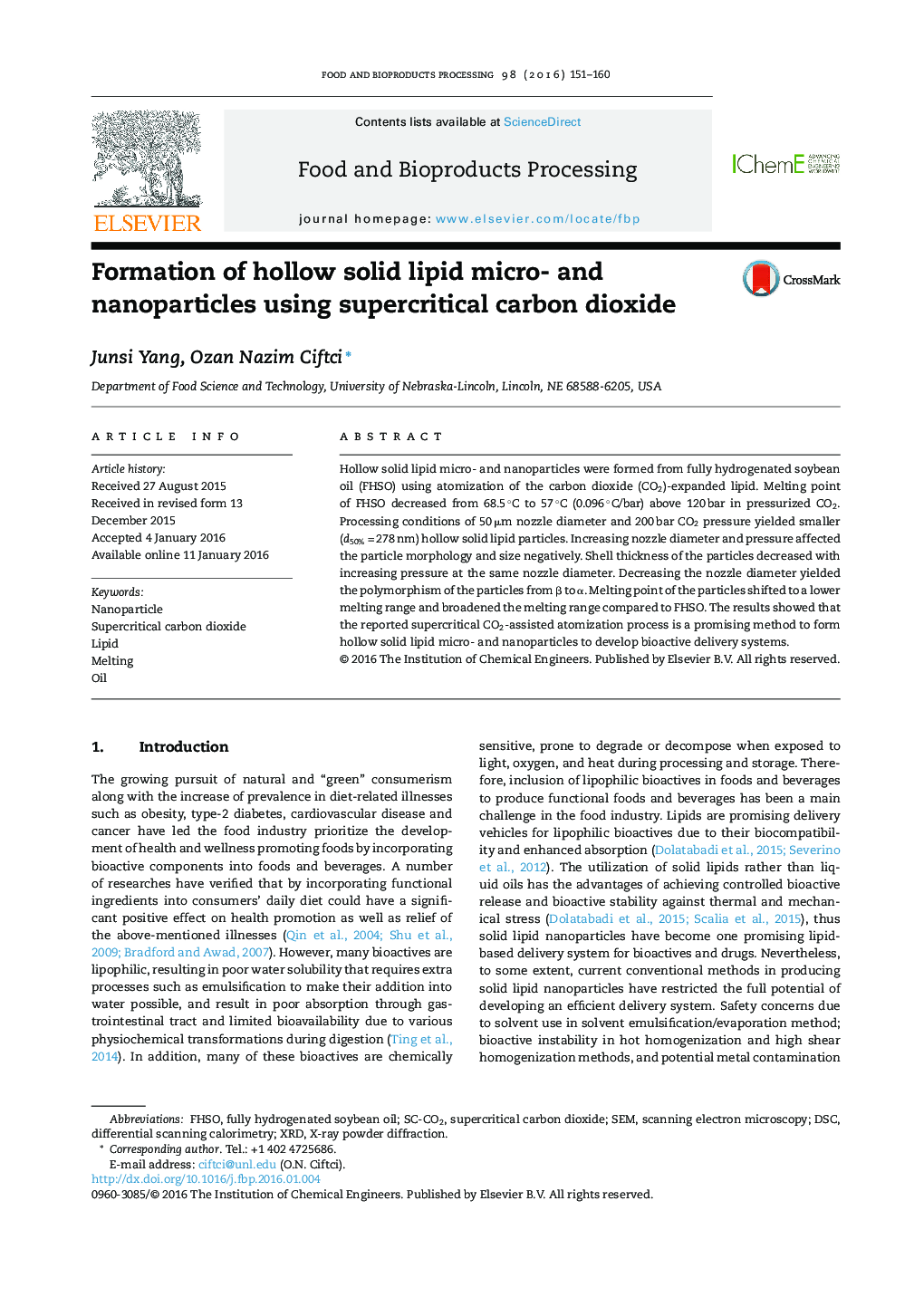| کد مقاله | کد نشریه | سال انتشار | مقاله انگلیسی | نسخه تمام متن |
|---|---|---|---|---|
| 18866 | 43036 | 2016 | 10 صفحه PDF | دانلود رایگان |
• A simple hollow solid lipid micro/nanosphere formation method is reported.
• Melting point of FHSO decreased from 68.5 °C to 57 °C above 120 bar in CO2.
• Particles exhibited broadened melting range and decreased melting point.
• Decreasing the nozzle diameter changed the polymorphism of the particles from β to α.
Hollow solid lipid micro- and nanoparticles were formed from fully hydrogenated soybean oil (FHSO) using atomization of the carbon dioxide (CO2)-expanded lipid. Melting point of FHSO decreased from 68.5 °C to 57 °C (0.096 °C/bar) above 120 bar in pressurized CO2. Processing conditions of 50 μm nozzle diameter and 200 bar CO2 pressure yielded smaller (d50% = 278 nm) hollow solid lipid particles. Increasing nozzle diameter and pressure affected the particle morphology and size negatively. Shell thickness of the particles decreased with increasing pressure at the same nozzle diameter. Decreasing the nozzle diameter yielded the polymorphism of the particles from β to α. Melting point of the particles shifted to a lower melting range and broadened the melting range compared to FHSO. The results showed that the reported supercritical CO2-assisted atomization process is a promising method to form hollow solid lipid micro- and nanoparticles to develop bioactive delivery systems.
Figure optionsDownload high-quality image (117 K)Download as PowerPoint slide
Journal: Food and Bioproducts Processing - Volume 98, April 2016, Pages 151–160
